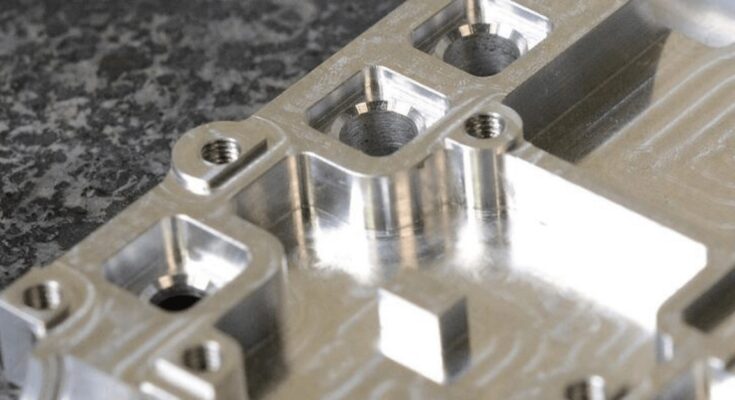Key Takeaways:
- The increasing dependence on wireless technology has led to a growing need for RF blocking materials to shield against electromagnetic interference (EMI).
- RF blocking materials work by absorbing or reflecting RF signals, protecting sensitive electronic equipment from external interference.
- RF blocking materials not only protect against interference but also minimize exposure to RF radiation, which can have long-term health effects.
- There are various types of RF blocking materials available, including conductive materials like metal foils and meshes, metallic materials like copper and aluminum, and non-metallic options such as conductive fabrics and films.
- When choosing RF blocking materials, factors to consider include shielding effectiveness, specific application requirements, and budget constraints.
- Proper installation and maintenance of RF blocking materials are important for optimal performance and longevity.
Why RF Blocking Materials are Essential in Today’s World
In today’s technologically advanced world, the use of wireless devices has become ubiquitous. From smartphones and tablets to Wi-Fi routers and smart home devices, we are constantly surrounded by electromagnetic waves. While these waves allow for seamless communication and connectivity, they also pose potential risks to our health and privacy.
The Increasing Need for RF Blocking Materials
With the increasing dependence on wireless technology, the need for RF (radio frequency) blocking materials has become more evident. RF blocking materials help to shield against electromagnetic interference (EMI), preventing unwanted signals from entering or leaving a designated area.
Traditionally, RF blocking materials were primarily used in sensitive military and government facilities. However, with the ever-growing concern for privacy and data security, these materials are now finding their way into homes, offices, and public spaces.
How RF Blocking Materials Protect Against Electromagnetic Interference
RF blocking materials work by effectively absorbing or reflecting RF signals, preventing them from passing through or reaching their intended destination. These materials contain conductive elements that create a barrier, blocking the transmission of electromagnetic waves.
By using RF blocking materials, sensitive electronic equipment can be protected from external interference. This is particularly important in environments where radio signals can disrupt the proper functioning of critical systems, such as hospitals, laboratories, and manufacturing facilities.
The Impact of RF Blocking Materials on Health and Safety
Besides shielding against electromagnetic interference, RF blocking materials also play a crucial role in protecting our health and safety. The constant exposure to RF radiation has raised concerns about its potential long-term effects on human health.
RF blocking materials help to minimize exposure to RF radiation by creating a physical barrier that reduces the penetration of electromagnetic waves. This is especially important for individuals who are more susceptible to the harmful effects of RF radiation, such as pregnant women, children, and individuals with certain medical conditions.
Moreover, RF blocking materials can also help to protect sensitive information by preventing unauthorized access to wireless signals. This is particularly relevant in the context of cybersecurity, where shielding against RF signals can help safeguard sensitive data and prevent eavesdropping.
The Different Types of RF Blocking Materials Available
When it comes to RF blocking materials, there are various options available, each with its own unique properties and advantages. Understanding the different types of materials can help you make an informed decision based on your specific needs and requirements.
Understanding the Basics: Conductive Materials
Conductive materials, such as metal foils and meshes, are commonly used for RF blocking applications. These materials have high electrical conductivity and can effectively reflect or absorb electromagnetic waves.
One of the key advantages of conductive materials is their ability to provide a high level of shielding effectiveness across a wide frequency range. They can easily be integrated into existing structures or applied as a coating to surfaces, making them versatile and adaptable to various applications.
The Advantages of Metallic RF Blocking Materials
Metallic RF blocking materials, such as copper and aluminum, offer excellent shielding properties due to their high electrical conductivity. They can effectively block RF signals and provide a reliable barrier against electromagnetic interference.
In addition to their shielding effectiveness, metallic RF blocking materials also have other advantages. They are durable and resistant to environmental factors, making them suitable for outdoor applications. Furthermore, they can be easily formed into different shapes, allowing for customization and flexibility in design.
Exploring Alternative Options: Non-Metallic RF Blocking Materials
In certain situations where using metallic RF blocking materials may not be feasible or desirable, non-metallic options can be considered. Non-metallic RF blocking materials, such as conductive fabrics and films, offer a lightweight and flexible alternative.
These materials are often used in applications where weight, flexibility, or aesthetics are important considerations. For example, in the construction of wearable garments, non-metallic RF blocking materials can provide protection against RF radiation without compromising comfort or style.
Choosing the Right RF Blocking Material for Your Application
Choosing the right RF blocking material involves considering various factors, including the effectiveness of the material, the specific requirements of the application, and any budget constraints. Understanding these factors can help you make an informed decision and ensure optimal performance.
Considering the Effectiveness of Different RF Blocking Materials
When evaluating the effectiveness of RF blocking materials, it is important to consider the material’s shielding effectiveness, measured in decibels (dB). The higher the shielding effectiveness, the better the material is at blocking RF signals.
Factors that can impact shielding effectiveness include the material’s conductivity, thickness, and the frequency range it is designed to block. Additionally, factors such as installation technique, seam construction, and the presence of any gaps or openings can also affect the overall shielding performance.
Finding the Ideal RF Blocking Material for Various Environments
Different environments may require different RF blocking materials based on their specific needs and challenges. For example, in an urban setting with high levels of RF interference, a material with high shielding effectiveness across a wide frequency range may be necessary.
In contrast, in a residential setting where aesthetics and design flexibility are important, non-metallic RF blocking materials may be preferred. These materials can be seamlessly integrated into the interior design without compromising on functionality.
Factors to Consider When Selecting RF Blocking Materials
When selecting RF blocking materials, it is important to consider factors such as cost, durability, and ease of installation. The budget available for the project will often dictate the choice of material, as metallic options tend to be more expensive than non-metallic alternatives.
Furthermore, considering the intended lifespan of the application and any specific environmental conditions is crucial. For outdoor applications, materials that are resistant to corrosion and UV degradation may be necessary to ensure long-term performance.
How to Install and Maintain RF Blocking Materials
Proper installation and maintenance of RF blocking materials are essential to ensure optimal performance and longevity. Following best practices can help maximize the effectiveness of the materials and avoid potential issues down the line.
Step-by-Step Guide: Installing RF Blocking Materials
Before installing RF blocking materials, it is important to thoroughly inspect the area and identify any potential sources of RF interference. This can help determine the best placement and coverage area for the materials.
Next, prepare the installation surface by ensuring it is clean, dry, and free from any debris. Depending on the material, it may be necessary to apply adhesive or use fasteners to secure the RF blocking materials in place.
Follow the manufacturer’s instructions for the specific material being used, taking care to properly overlap seams and ensure a tight fit. This will help create a continuous barrier that effectively blocks RF signals.
The Importance of Regular Maintenance for Longevity
Regular maintenance is essential to ensure the continued effectiveness of RF blocking materials. This includes inspecting the materials for any signs of wear or damage, such as tears or corrosion.
Cleaning the materials on a regular basis can also help maintain their performance. Non-abrasive cleaning solutions and soft cloths should be used to remove any dirt or debris that may accumulate on the surface.
Common Mistakes to Avoid When Installing RF Blocking Materials
When installing RF blocking materials, it is important to avoid common mistakes that can compromise their effectiveness. One common mistake is leaving gaps or openings in the installation, which can allow RF signals to leak through.
Another mistake is using incompatible materials or improper installation techniques. It is crucial to follow the manufacturer’s recommendations and consult professionals if needed to ensure proper installation.
Overall, RF blocking materials are essential in today’s world to protect against electromagnetic interference and safeguard our health and privacy. Understanding the different types of materials available and selecting the right one for your specific application can help ensure optimal performance. By following proper installation and maintenance practices, you can maximize the effectiveness and longevity of RF blocking materials.
FAQ
Question: What are RF blocking materials? RF blocking materials are substances that work by absorbing or reflecting RF (radio frequency) signals, protecting sensitive electronic equipment from external interference.
Question: Why are RF blocking materials important? RF blocking materials are important because they shield against electromagnetic interference (EMI), preventing unwanted signals from entering or leaving a designated area. They also minimize exposure to RF radiation, which can have long-term health effects.
Question: Who should use RF blocking materials? RF blocking materials can be used by individuals, businesses, and organizations that rely on sensitive electronic equipment and want to protect against interference and minimize health risks associated with RF radiation.
Question: What are the different types of RF blocking materials available? There are various types of RF blocking materials available, including conductive materials like metal foils and meshes, metallic materials like copper and aluminum, and non-metallic options such as conductive fabrics and films.
Question: How do RF blocking materials protect against electromagnetic interference? RF blocking materials work by effectively absorbing or reflecting RF signals, preventing them from passing through or reaching their intended destination. These materials contain conductive elements that create a barrier, blocking the transmission of electromagnetic waves.
Question: Can RF blocking materials protect against RF radiation? Yes, RF blocking materials help to minimize exposure to RF radiation by creating a physical barrier that reduces the penetration of electromagnetic waves.
Question: How do I choose the right RF blocking material? When choosing RF blocking materials, factors to consider include shielding effectiveness, specific application requirements, and budget constraints. It is important to evaluate the effectiveness of different materials, their suitability for your environment, and any cost and durability considerations.
Question: How do I install and maintain RF blocking materials? Proper installation and maintenance of RF blocking materials are important for optimal performance and longevity. Before installation, inspect the area for potential sources of RF interference. Follow the manufacturer’s instructions for installation, ensuring a tight fit and overlap of seams. Regular maintenance includes inspecting for wear or damage and cleaning with non-abrasive solutions.
Useful Resources
- https://www.kjmagnetics.com/ – Website providing information on magnetic materials and their applications
- https://www.amuneal.com/ – Website offering custom metal fabrication services for RF shielding solutions
- https://www.copper.org/ – Official website of Copper Development Association providing information on copper and its properties
- https://www.aluminum.org/ – Official website of The Aluminum Association providing information on aluminum and its applications
- https://textiles.ncsu.edu/ – Website of the Textiles Department of North Carolina State University, offering information on conductive fabrics
- https://www.particular.com/ – Web page of Particular, a company specializing in RF blocking films and coatings
- https://www.cableorganizer.com/ – Website offering a range of products for cable management and RF shielding
- https://www.nfpa.org/ – Official website of the National Fire Protection Association, providing information on safety codes and standards



